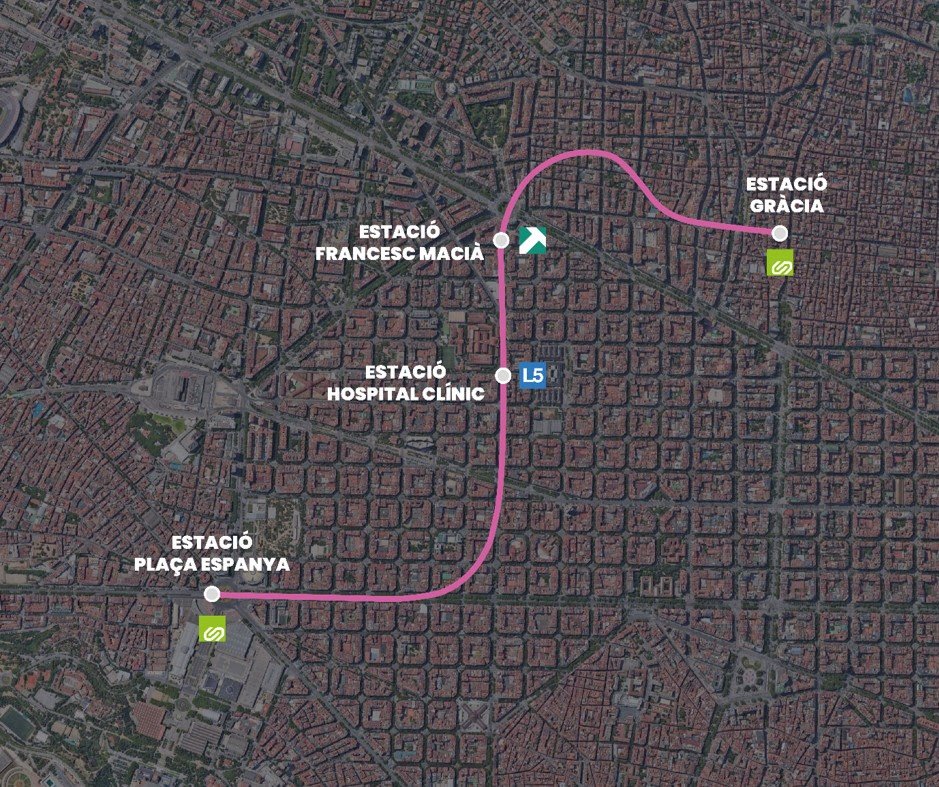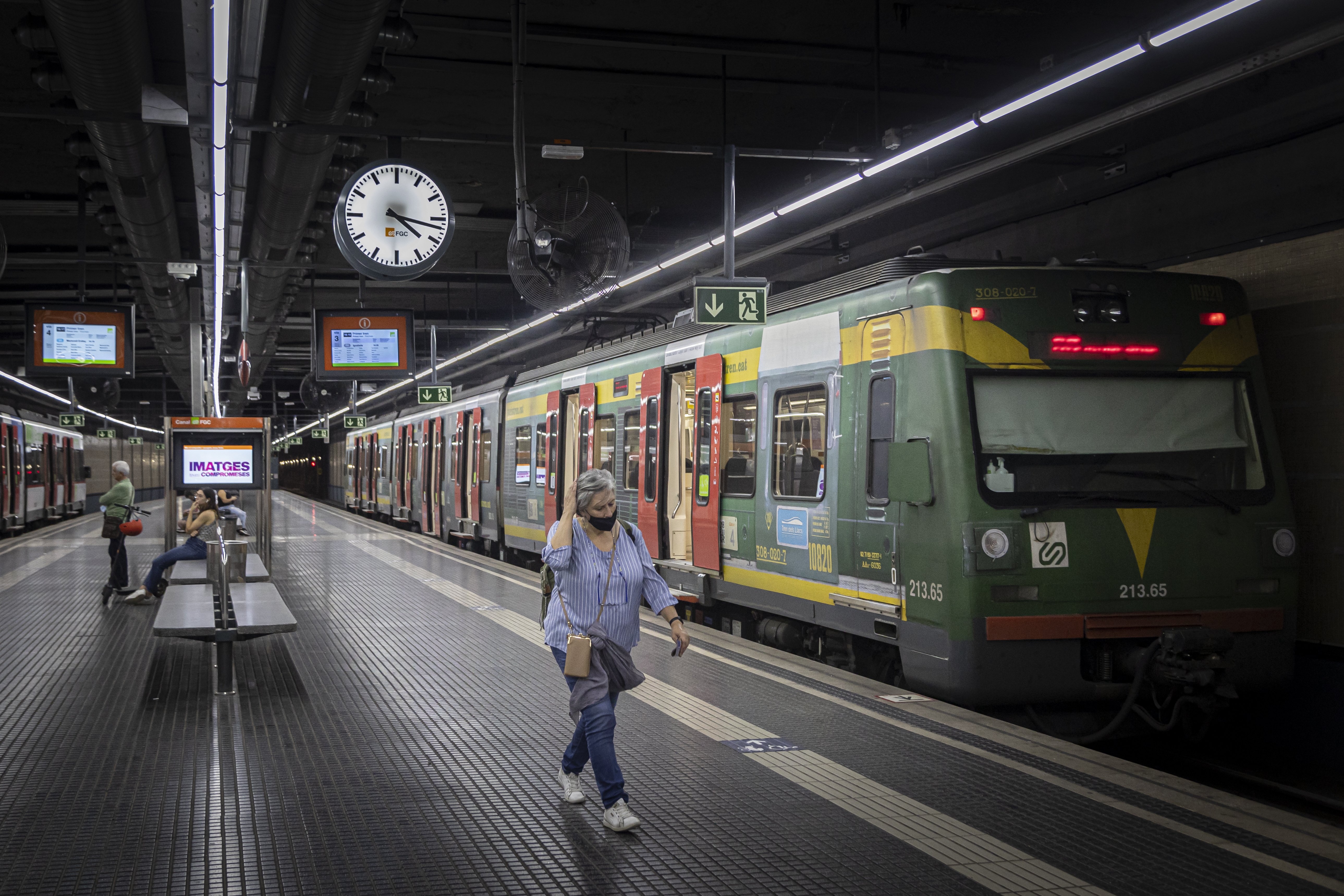The Catalan territorial ministry has awarded the main contract, worth 300 million euros, for the underground connection that will prolong the FGC or Ferrocarrils lines that currently end at Plaça Espanya, taking them under part of the Eixample and Sant Gervasi to end at the FGC station of Gràcia. The project will include the construction of a four kilometre tunnel and three new stations - one of them at Plaça Francesc Macià - and the remodelling of two existing ones. The works have been awarded with a deadline of 58 months - almost five years - with the forecast that they will start at the end of this summer. It is expected that the new lines will come into operation at the end of the decade. Adding into this the spending on deviation of existing services and other projects involved, and this project will entail an overall investment of more than 400 million euros.
These works now awarded consist of the extension of the Ferrocarrils de la Generalitat de Catalunya lines to Llobregat-Anoia back into the city from their current Plaça Espanya terminus so that they connect up with the FGC's Vallès line in the area of Gràcia station. Thus, a new deep tunnel will be drilled using a tunnel boring machine - a single tube that will include both tracks - except for a small initial section that will be dug as two parallel tunnels, each with a single track. In total, four kilometers long with a 10 metre excavation diameter. Along its route, the new railway section will have three new stations and three emergency exits from the tunnel to the street.
The new stations
As for the stations, there will be three new ones, Hospital Clínic, Francesc Macià and Gràcia. Additionally, the Plaça Espanya stations (current Llobregat-Anoia line) will be remodelled and the current Gràcia station on the FGC Vallès line will also be remodelled.
Plaça d'Espanya: Currently, the FGC Plaça d'Espanya station is the terminus of the Llobregat-Anoia line. The construction will lead to the remodelling of this station which is part of a major interchange in the public transport system, where several FGC lines and Metro lines 1 and 3 converge. Thus, two of the four tracks that currently exist at the FGC station will be extended, the vestibule will be expanded and the accesses and connections between levels will be reconfigured.
Hospital Clínic: On Carrer Comte Urgell, between Rosselló and Còrsega, a new station will be built that will connect the FGC line with L5 of the metro.
Francesc Macià: On Carrer Comte Urgell, between Buenos Aires and Plaça Francesc Macià, a brand new station will be located that will facilitate interchange with the tramway and various bus lines, both urban and interurban. It will have two accesses from the street and a lobby.
Gràcia station: A new station will be built under Travessera de Gràcia, between Carrer Balmes and Plaça Gal·la Placídia, with two accesses from street level, on the sidewalks between Via Augusta and Carrer Neptú. From the new station's lobby, both the L8 and the FGC Vallès line will be accessed via high-capacity lifts.

In addition to the infrastructure contract now being awarded, which covers the bulk of the connection of the FGC lines, the territorial ministry is working on the detailed plans for the railway, track and catenary installations and station architecture. In parallel, and prior to the start of the tunnel drilling work, a campaign of inspections will be carried out of more than 13,500 homes, premises and garages, to guarantee that all owners have reliable knowledge of their condition.
More rail coverage and connectivity
The connection of the two FGC lines, Vallès and Baix Llobregat-Anoia, will improve the rail service, saving travel time for users who currently have to transfer, and will open up new intermodality possibilities in the system, since the new stations will facilitate the interchange with the metro L5, tram and other FGC lines. It will also improve and expand public transport coverage in a densely populated part of Barcelona which, in addition, has several important facilities (such as the Hospital Clínic and the Escola Industrial).

